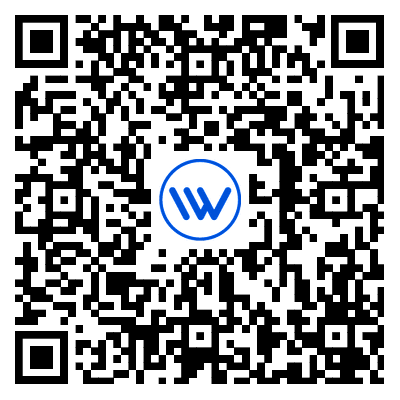Case: Lerwee Drives Intelligent IT O&M for Global Smart Mfg
PART 01 Project Background
01 Customer Introduction
The customer in this case is a global provider of integrated smart manufacturing and industrial internet solutions, focusing on the R&D, production of network communication equipment, and the provision of overall industrial internet solutions.
02 Pain Point Analysis
With the expansion of the enterprise scale and the complication of business, the management difficulty of IT infrastructure has increased exponentially. The traditional operation and maintenance mode can no longer meet the enterprise’s needs for efficient, transparent, and intelligent management. Enterprises are in urgent need of a comprehensive solution to address the following challenges:
- System Availability and Performance: Any downtime or performance degradation will have a significant impact on business operations.
- Resource Management and Optimization: The full-lifecycle management of IT assets is complex, and resource waste and compliance risks need to be addressed urgently.
- Network Stability and Security: The management of network equipment and traffic is difficult, and security threats are constantly increasing.
- Operation and Maintenance Efficiency and Cost: The cost of manual operation and maintenance is high, and it is difficult to achieve rapid fault response and resource optimization.
PART 02 Lerwee Solution: Integrated IT Operation and Maintenance Management Platform
Lerwee has customized an integrated IT operation and maintenance management platform for this enterprise, covering multiple modules such as IT monitoring, asset management, and network management, to fully meet the enterprise’s digital transformation needs.
- Real-time Monitoring and Fault Early Warning: By monitoring the health status of the system in real time, setting alarm thresholds, and supporting automatic fault notification, the high availability of the system is ensured.
- Full-lifecycle Management of Assets: Automatically discover and track all IT assets, including hardware and software, from procurement to decommissioning, so as to optimize resource utilization and reduce waste and compliance risks.
- Network Equipment and Link Monitoring: Monitor the status of network equipment and links in real time, provide fault detection and performance analysis, and ensure network stability and security.
01 Platform Architecture: Distributed Design and High Availability
- Distributed Architecture: Adopt a distributed design to ensure that the system can continue to operate in the event of unforeseen events such as hardware failures and network outages.
- Redundant Design: Improve business continuity and system stability through redundant mechanisms.
- Hierarchy and Modularity: Reasonably design the coupling relationship of each module to ensure the scalability and flexibility of the system.
- Three-level Management Mode: Based on the three-level management mode of organization, role, and user, control user permissions through roles to ensure the rationality of permission allocation.
- Internationalized Interface: Provide a graphical interface that can switch between Chinese and English to meet the needs of users at home and abroad.
02 Unified Object Control and Centralized Management
- Host Monitoring: Fully cover mainstream systems such as cloud servers, CentOS, and Windows, and monitor key indicators in real time, including Exchange email services, CPU usage, memory space, file systems, and network card rates.
- Network Equipment Monitoring: Support mainstream equipment such as Cisco, H3C, and Huawei, and monitor important indicators in real time, such as port status, motherboard status, optical attenuation, and the number of APs.
- Virtualization Monitoring: Integrate the vCenter platform, monitor resources such as Clusters, Datacenters, and Datastores, and realize real-time monitoring of resource association status.
- Server Monitoring: Monitor the hard disk status and alarm information of servers such as DELL and Cisco through protocols such as IPMI and SNMP.
- Dedicated Line Monitoring: Support dedicated line types such as SLA and NQA, and monitor connectivity, delay, and bandwidth utilization in real time.
- Monitoring of Other Types of Resources
03 Highlight Analysis: Perfect Combination of Intelligence and Visualization
- Global View: The global view not only provides an overview of the overall resource type, quantity, and health status but also conducts real-time analysis of core indicators through intelligent algorithms to generate chart displays of the TOP 5 key indicators. These indicators include CPU usage, memory occupancy, network traffic, etc., helping operation and maintenance personnel quickly identify bottlenecks and potential problems in the system. In addition, the global view also supports custom dashboards, allowing users to select indicators of concern according to their own needs to further improve operation and maintenance efficiency.

- Resource List: The resource list supports host management by region and provides multi-dimensional filtering and sorting functions, such as by device type, operating system, IP address, etc. When a device has an alarm, the system will automatically highlight the device and provide quick positioning functions, such as jumping to the specific cabinet or computer room where the device is located. In addition, the resource list also supports batch operations, such as batch restart and batch configuration update, which greatly improves the work efficiency of operation and maintenance personnel.
- Network Topology: The network topology function not only supports cross-border multi-level topology display but also provides an intelligent path analysis function to help users quickly identify key paths in the network and potential single points of failure. Users can customize the topology map through simple drag-and-drop operations, replace icons, adjust the layout, and even add custom annotations. The system also supports the automatic generation and update of topology maps to ensure that the topology map is always consistent with the actual network structure.

- Wireless Management: The wireless management module not only displays the monitoring status of AC/AP but also provides detailed performance analysis reports, such as signal strength, number of connections, traffic distribution, etc. The system supports an automatic alarm function. When an abnormality occurs in the wireless device, it will automatically send a notification and generate a fault report. In addition, wireless management also supports remote configuration and optimization. Users can directly adjust the parameters of wireless devices, such as channels and power, through the system to ensure the best performance of the wireless network.
- IP Management: The IP management function not only records the online status of IP addresses, MAC addresses, and historical changes of terminal information but also provides automatic IP address allocation and recovery functions to ensure the rational use of IP resources. The system supports automatic detection and repair of IP conflicts. When an IP conflict is found, it will automatically isolate the conflicting device and provide a solution. In addition, IP management also supports integration with DHCP servers to realize dynamic management of IP addresses.

- Configuration Backup: The configuration backup function not only supports scheduled backup of network device configuration files but also provides version management functions for configuration files, allowing users to view and restore historical configurations at any time. The system supports multiple backup strategies, such as full backup and incremental backup, to ensure the security and integrity of backup data. In addition, configuration backup also supports an automatic recovery function. When a device fails, it can be automatically restored to the latest backup configuration to reduce system downtime.
- CMDB Asset Management: The CMDB asset management module not only displays instance relationships in a graphical way but also provides detailed asset information, such as device model, serial number, warranty information, etc. The system supports a simulated 3D computer room large-screen display, allowing users to intuitively view the location and status of devices through a 3D view. When a device has an alarm, the system will automatically highlight the device in the 3D view and provide detailed fault information and solutions. In addition, CMDB also supports the full-lifecycle management of assets to help users reasonably plan the update and replacement of devices.
- User and Role Management: The user and role management module not only supports flexible configuration of user permissions but also provides detailed permission audit functions, recording all operation logs of users to ensure the security of resource access. The system supports multi-level permission control, such as role-based access control (RBAC) and attribute-based access control (ABAC), to ensure that different users can only access and operate resources related to their responsibilities. In addition, user and role management also supports automatic permission allocation and recovery. When a user’s role changes, the system will automatically adjust their permissions to ensure the timeliness and accuracy of permission management.
04 Solution Value: Improve Operation and Maintenance Efficiency and Reduce Operation and Maintenance Costs
- Improve System Availability: Ensure business continuity through redundant design and intelligent alarms.
- Optimize Resource Management: Automate the full-lifecycle management of assets to reduce resource waste and compliance risks.
- Reduce Operating Costs: Intelligent alarms and fault detection significantly reduce the cost of manual operation and maintenance.
- Enhance Network Security: Ensure the compliance of software licenses through asset management and enhance network security.
- Early Warning of Potential Risks: Real-time monitoring and trend analysis help operation and maintenance personnel detect and handle potential problems in advance.
PART 03 Customer Benefits: Fully Control IT Infrastructure and Empower Digital Transformation
Through Lerwee’s integrated IT operation and maintenance solution, the customer has achieved full control of IT infrastructure; the real-time monitoring and automated management functions have greatly reduced the need for manual intervention and improved operation and maintenance efficiency; the automatic discovery and tracking functions of the asset management module have optimized resource utilization and avoided over-purchasing and resource waste.
At the same time, with the help of real-time monitoring data, reports, and trend analysis functions, the customer can gain a clearer understanding of the operation status of the IT environment, provide a scientific decision-making basis for the management, optimize resource allocation, formulate budgets, and make strategic adjustments.
- 案例解读 | 某大型家居企业综合运维监控平台建设实践
- Case Study: IT O&M Platform for a Listed Special Materials High-Tech Firm
- Case Interpretation: O&M System Construction for Listed Mfg. Enterprise
- Case Study: Monitoring & Network Management for a Listed Electronic Circuit Substrate Enterprise
- Case: Lerwee Drives Intelligent IT O&M for Global Smart Mfg
- Case: HK Diversified Finance Firm’s Monitoring & Network Mgmt Platform

